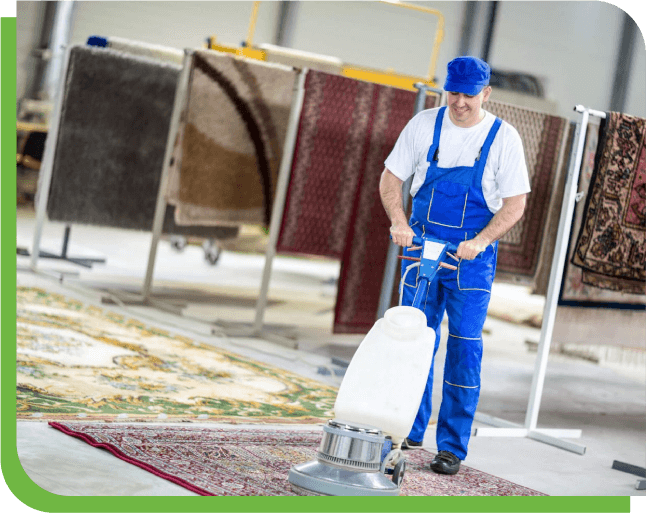
The Ultimate Guide to Carpet Steam Cleaning: DIY vs. Professional Services
Carpet longevity significantly improves with regular
, reducing the need for frequent replacements. Keeping your carpets clean is essential not only for aesthetics but also for a healthier home environment. Carpet steam cleaning is one of the most effective deep-cleaning methods, removing dirt, bacteria, and allergens trapped within carpet fibers. But the question remains—should you tackle the task yourself or hire a professional? This guide breaks down both options to help you make an informed decision.
What is Carpet Steam Cleaning, and Why Does It Matter?
Homeowners looking for an effective
method often turn to professional services for the best results. Carpet steam cleaning, also known as hot-water extraction, involves spraying a hot water solution deep into the carpet fibers and extracting dirt, grime, and bacteria using high-powered suction. This method is preferred for its ability to sanitize and refresh carpets without leaving harmful residues.
Benefits of Carpet Steam Cleaning
- Removes allergens and bacteria – Great for households with pets, children, or allergy sufferers.
- Extends carpet lifespan – Deep cleaning prevents fiber deterioration and maintains quality.
- Eliminates stubborn stains and odors – Unlike vacuuming, steam penetrates deep into fibers to dissolve stains.
- Eco-friendly option – Uses hot water instead of harsh chemicals, making it safer for the environment.
DIY Carpet Steam Cleaning: Is It Worth the Effort?
Choosing the right
technique depends on your carpet type and cleaning needs. Many homeowners consider renting or purchasing a steam cleaner for cost savings and convenience. But is it the best choice?
Pros of DIY Carpet Steam Cleaning
- Cost-effective – Renting a machine is more affordable than hiring a professional.
- Convenience – Clean your carpets at your own pace and schedule.
- Spot cleaning flexibility – Quickly address small stains and spills as they happen.
Cons of DIY Carpet Steam Cleaning
- Less powerful equipment – Consumer-grade machines lack the heat and suction power of professional ones.
- Longer drying times – Excess water left in carpets can lead to mold and mildew.
- Potential damage – Using too much detergent or water can harm carpet fibers and padding.
- Physical labor – Moving furniture, handling the machine, and cleaning large areas can be exhausting.
Professional Carpet Steam Cleaning: Is It Worth the Cost?
Hiring a professional for carpet steam cleaning can be an investment, but it often yields superior results.
Advantages of Hiring a Professional
- High-powered equipment – Professional cleaners use industrial-grade machines for deeper cleaning and faster drying.
- Expertise and experience – Technicians understand carpet types, stains, and proper cleaning techniques.
- Saves time and effort – No need to move furniture, refill water tanks, or handle the equipment yourself.
- Long-lasting results – Deep cleaning ensures a fresher, cleaner carpet for longer periods.
Drawbacks of Professional Cleaning
- Higher cost – A professional service can be costly, especially for large spaces.
- Scheduling constraints – You’ll need to book an appointment and wait for availability.
- Potential hidden fees – Some services charge extra for stain treatments or high-traffic areas.
DIY vs. Professional Carpet Steam Cleaning: A Quick Comparison
| Factor | DIY Cleaning | Professional Cleaning |
|---|---|---|
| Cost | Lower upfront cost | Higher upfront cost but better long-term value |
| Equipment Power | Consumer-grade steamers | Industrial-strength machines |
| Drying Time | 12-24 hours | 4-6 hours with high-powered suction |
| Effort | Physically demanding | Minimal effort required |
| Effectiveness | Moderate stain and dirt removal | Deep cleaning with superior results |
How Often Should You Steam Clean Your Carpets?
The frequency of carpet steam cleaning depends on various factors:
- Low-traffic homes: Every 12-18 months
- Homes with kids or pets: Every 6-12 months
- Allergy sufferers: Every 3-6 months
- High-traffic commercial areas: Every 3-6 months
Pro Tips for DIY Carpet Steam Cleaning
If you decide to clean your carpets yourself, follow these best practices for optimal results:
- Vacuum First: Remove surface dirt and debris before using a steam cleaner.
- Use the Right Cleaning Solution: Check your carpet’s material and choose an appropriate detergent.
- Don’t Over-Saturate: Too much water can lead to mold growth and fiber damage.
- Allow Proper Drying: Open windows, use fans, or turn on the air conditioning to speed up drying time.
- Spot Test Cleaning Agents: Always test a small, hidden area before applying a new solution to the entire carpet.
FAQs About Carpet Steam Cleaning
1. Is steam cleaning safe for all carpet types?
Yes, but delicate carpets like wool may require special care. Always check manufacturer guidelines.
2. How long does it take for carpets to dry after steam cleaning?
Drying times vary, but professional cleaning typically takes 4-6 hours, while DIY methods can take up to 24 hours.
3. Can I walk on my carpet after steam cleaning?
It’s best to wait until the carpet is fully dry. If necessary, wear clean socks or shoe covers to avoid reintroducing dirt.
4. Does steam cleaning remove pet odors?
Yes, but heavily soiled areas may require additional treatments like enzymatic cleaners.
5. Is steam cleaning better than shampooing?
Yes! Steam cleaning uses less detergent, leaves no sticky residue, and provides a deeper clean compared to traditional shampooing.
Conclusion: Which Option is Best for You?
If you’re looking for a budget-friendly way to refresh your carpets, DIY carpet steam cleaning might work for routine maintenance. However, for deep cleaning, removing tough stains, and ensuring a healthier living space, hiring a professional is the superior choice.
Investing in professional carpet steam cleaning periodically will enhance your home’s cleanliness, extend your carpet’s lifespan, and improve indoor air quality.
